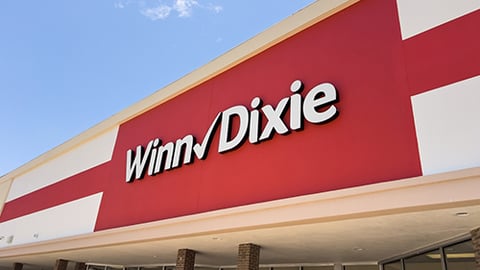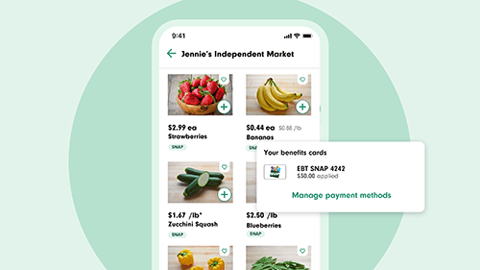Digital Compassion: How Technology Can Bridge America's Benefit Gap
When the pandemic struck in March 2020, it exposed a critical failure in America's social safety net. Millions of SNAP recipients suddenly faced an impossible choice: risk COVID exposure in crowded grocery stores or go hungry. Why? Because our antiquated benefits system wasn't designed for the digital age.
As the lead engineer tasked with building Instacart's nationwide EBT acceptance system in just four months, I witnessed firsthand how technological oversights can become humanitarian crises. The digital infrastructure needed for online grocery benefits barely existed before the pandemic — confined to a small USDA pilot program operating in just a handful of ZIP codes.
[RELATED: National Grocers Association Foundation Forms Advisory Committee for SNAP EBT Modernization]
What began as a technical challenge quickly revealed itself as something more profound. Late one night, analyzing user data, I discovered a disturbing pattern: visitors from lower-income ZIP codes were adding groceries to carts only to abandon them at checkout. These weren't casual browsers; they were likely EBT recipients discovering too late that their benefits weren't accepted online.
This wasn't just a friction point — it was a moment of profound disappointment for vulnerable users who had invested time and hope in the process. It was a stark reminder that seemingly neutral technical architectures can inadvertently create barriers for those already struggling.
Ecosystem of Support
The revelation changed our approach entirely. We pivoted from merely enabling transactions to designing an ecosystem of support. We built an address-based detection system that proactively suggested EBT payment options to users in high-benefit areas. We engineered a real-time eligibility engine that evaluated millions of products, providing clarity about which items qualified for EBT purchase. We created sophisticated split-tender functionality that could seamlessly process multiple payment methods in a single transaction.
But the most important lessons came from speaking directly with EBT recipients. Many expressed feeling stigmatized when using their benefits. This feedback inspired us to embed dignity directly into the system's design. We concealed payment method details from shoppers filling orders, modified label-generation algorithms to omit EBT indicators, and built recommendation engines that suggested affordable, nutritious alternatives when items were out of stock.
The impact was remarkable. Within 18 months, our systems were processing orders across 44 states and hundreds of retailers. EBT customers showed higher retention rates than traditional customers, ultimately accounting for approximately 10% of company revenue. This proved that designing for inclusion wasn't just socially responsible — it was good business.
[RELATED: Grocery Retail for All Summit Sparks Conversations to Boost Food Access, Security]
As we navigate 2025's digital landscape, the technology that once served as a lifeline during the pandemic now faces real threats from policy rollbacks and budget constraints. With the new administration considering significant SNAP cuts that could affect millions of families, and Congress having recently ended funding for SNAP theft replacements, we're witnessing how quickly hard-won progress can unravel. Meanwhile, states like California and Oklahoma are finally implementing EMV chip technology for EBT cards in 2025 – a basic security feature that mainstream payment cards have had for years. Creating truly inclusive technology requires not just technical innovation but also political will to protect and expand these systems rather than dismantling them.
Practical Guidelines for Retailers
We came up with some principles that retailers can adopt to grow their business while making a meaningful difference:
See the Need Before It Hits a Wall: Use geographic data analytics to identify areas with high EBT usage and proactively market your EBT acceptance. Display clear signage about EBT acceptance both online and in-store so customers don't discover this limitation at checkout.
Align with Users' Financial Rhythms: Schedule promotions and ensure robust inventory around SNAP disbursement dates, which vary by state. Adjusting staffing and stock levels to match these predictable purchasing patterns shows respect for customers' needs while boosting your sales during peak periods.
Curate for Accessibility: Create dedicated "EBT-friendly" sections or digital aisles featuring eligible items, making shopping more efficient and less stressful for SNAP recipients. Consider bundling EBT-eligible essentials with complementary non-food necessities.
Design for Dignity: Train staff to handle EBT transactions with the same professionalism as any other payment method. Ensure your online checkout clearly indicates which items qualify for EBT payment without drawing unnecessary attention to the payment method itself.
Make Complexity Invisible: Implement seamless split-tender functionality that automatically applies EBT funds to eligible items first before transitioning to secondary payment methods. This saves time, reduces checkout friction, and eliminates potentially embarrassing moments for customers.
Protect the Vulnerable: Implement specialized security measures to safeguard EBT users from fraud while maintaining a smooth shopping experience. Adopt the latest EBT card security technologies being rolled out in states like California and Oklahoma.
The experience of building Instacart's EBT system demonstrated that inclusive technology benefits everyone – it expands market reach for businesses while providing essential services to those who need them most. Success comes not from grand initiatives but from practical, thoughtful implementation that respects the dignity and real-world needs of all users.






